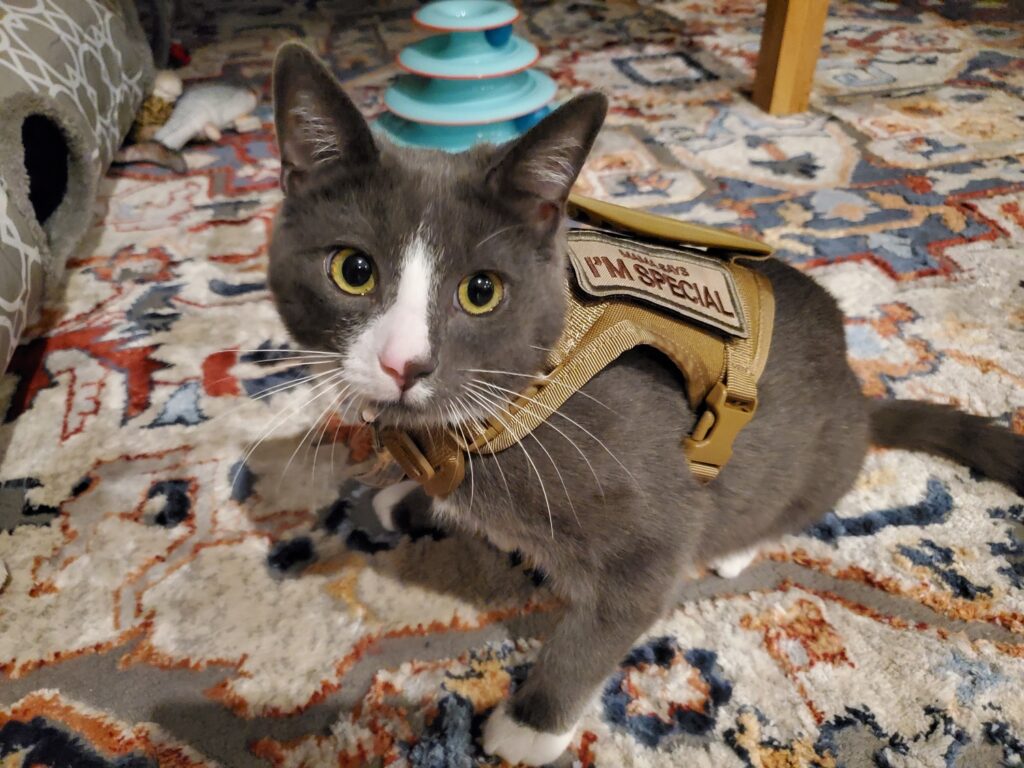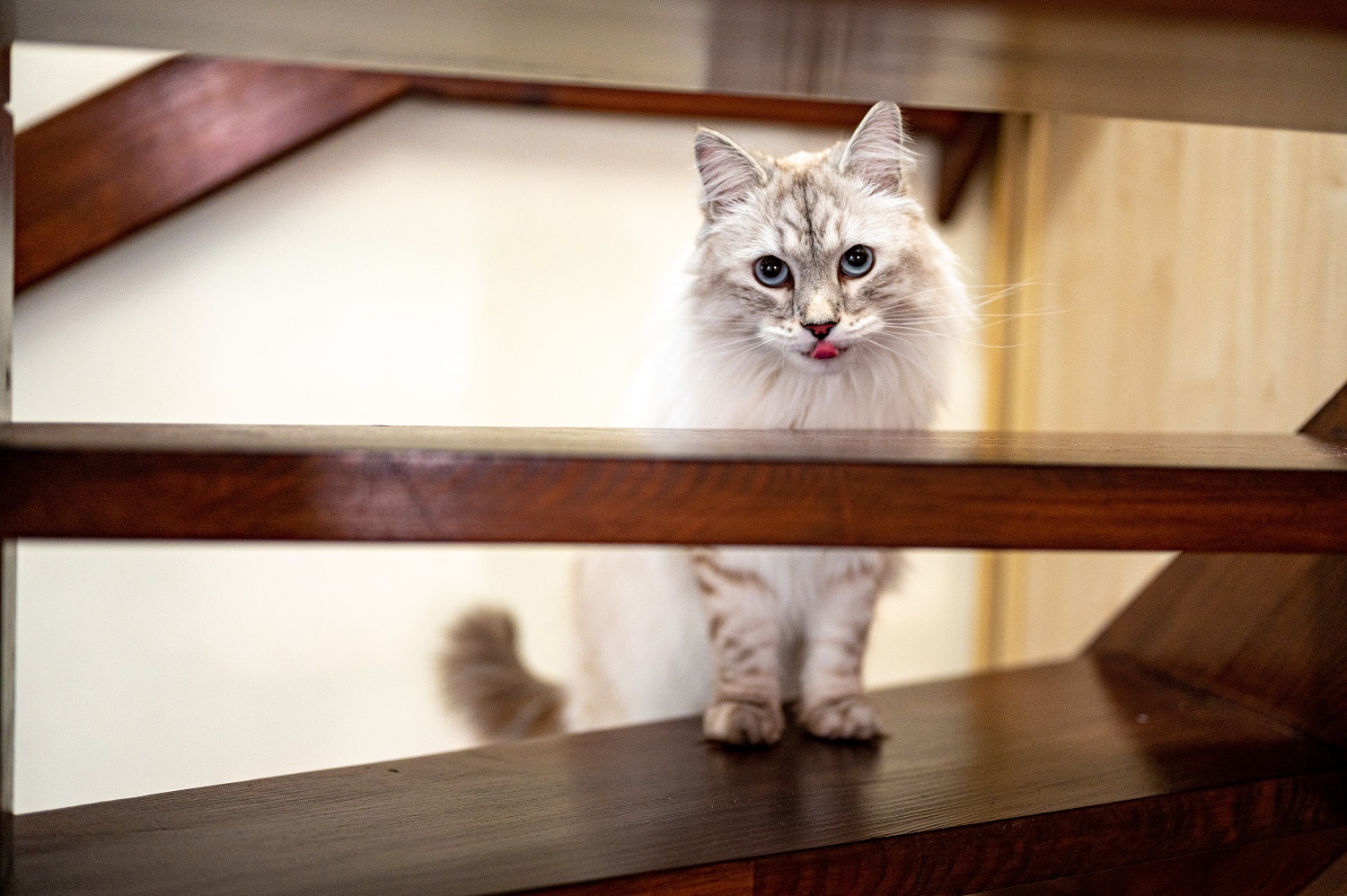Kittens are tiny bundles of curiosity with legs. They are also not very graceful during the early stages of learning how to balance and climb. If you live in a home with stairs, it is completely normal to worry about your kitten tumbling down them or getting into trouble during one of their daring adventures.
The good news is that you can make your stairs safer without locking your kitten away or eliminating their freedom to explore. A few thoughtful precautions go a long way in preventing injuries and setting healthy boundaries for your feline explorer.
Here is how to kitten-proof your stairs and keep your little climber safe as they grow.
Why Stairs Can Be Dangerous for Kittens
Kittens may be natural athletes in the making, but they are still learning basic coordination. Stairs can pose several risks, especially during the first few weeks in a new home.
Common stair-related dangers include:
- Slipping and falling while trying to climb
- Getting stuck between railings or banisters
- Chasing toys or siblings and misjudging a step
- Jumping from high ledges or stairs
- Playing too roughly near the edge
A single misstep on a slippery surface can lead to bruises, sprains, or worse. That is why early supervision and safety setup are so important.
When Should You Start Kitten-Proofing?
You should kitten-proof your stairs before bringing your new kitten home. If you already have a kitten and they are starting to explore, the sooner you put safeguards in place, the better.
Kittens begin climbing and exploring as early as five to six weeks old, and by eight weeks, they are often eager to conquer stairs. At this stage, they are full of confidence but lacking in balance, which makes them more prone to accidents.
How to Make Stairs Safe for Kittens
Here is a step-by-step approach to kitten-proofing your stairs and minimizing risk.
1. Block Access When You Cannot Supervise
Use pet gates or baby gates to prevent access to staircases when you are not around to keep an eye on things. Look for gates with vertical bars or solid panels that a kitten cannot squeeze through or climb over.
Make sure the gate is securely mounted and cannot be pushed open. Temporary barriers may not work well for energetic kittens.
2. Add Traction to Slippery Steps
If your stairs are hardwood, tile, or laminate, your kitten may have trouble getting traction. This can lead to slips and stumbles, especially when they try to run.
To fix this, you can:
- Add non-slip stair treads or carpet runners
- Use rubber-backed mats that stay in place
- Avoid waxes or polishes that make stairs more slick
Better traction helps your kitten build confidence and improves their stability as they learn to climb and descend safely.
3. Cover or Block Gaps in Railings
Many staircases have railings or balusters with spaces wide enough for a small kitten to fall through or get stuck.
You can cover these gaps using:
- Clear plexiglass panels
- Mesh fabric or netting
- Temporary baby-safe railing guards
Make sure anything you use is tightly secured and cannot be chewed, pulled, or climbed. Regularly check for loose spots or damage.

What do you mean, you need to train me to go up stairs? That’s for babies. I’m a big boy! And what’s the deal with this “safety harness”? Are we invading Afghanistan? I’m a cat, for Pete’s sake. #ImNotABaby #BigBoyKitty #StairsAreMyBitch
Winston
4. Prevent Jumping from High Stair Landings
Some staircases have landings or railings that overlook open spaces. Kittens may attempt to leap or balance on narrow edges, not realizing how far the drop is.
Keep high ledges and railings off-limits by:
- Moving furniture away from landing edges
- Blocking access with secure barriers
- Supervising climbing behavior in elevated areas
As kittens get older and more agile, these spots become even more tempting. Staying one step ahead can prevent falls.
5. Avoid Toys Near the Stairs
Do not place toys, laser pointers, or food bowls near stairways. Excited kittens can easily lose track of their surroundings and tumble while chasing a toy too close to the edge.
Encourage playtime in safe areas with flat, open space. Always supervise when using wand toys or anything that encourages running.
What If Your Kitten Falls?
Accidents can still happen, especially with energetic kittens. If your kitten falls down the stairs:
- Check for signs of limping or injury
- Gently examine their body for soreness or sensitivity
- Call your vet if they show signs of pain, fear, or abnormal behavior
Even a small fall can cause strain or injury, so it is better to be cautious. Kittens are resilient, but they should always be monitored after a tumble.
Final Thoughts: Stairs Are an Adventure, but Safety Comes First
Stairs may seem like a playground to a curious kitten, but they come with risks that should not be overlooked. With some simple changes and a watchful eye, you can let your kitten explore safely while protecting them from dangerous falls or close calls.
Once your kitten grows more confident and coordinated, you can gradually relax some of the restrictions. Until then, take a few extra steps to keep their stair adventures safe and accident-free.
Sources:
– How to Kitten-Proof Your Home https://www.petmd.com/cat/care/kitten-proofing-your-home
– Kitten Safety and Climbing Behavior https://www.icatcare.org/advice/kitten-development-and-safety
– Preventing Falls and Injuries in Young Cats https://vcahospitals.com/know-your-pet/kitten-behavior-and-safety
– Home Hazards to Watch for with Kittens https://www.aspca.org/pet-care/cat-care/general-cat-care
– Cat-Proofing Tips for Stairs and Ledges https://www.humanesociety.org/resources/keeping-cats-safe-home
Recent Posts
Your Cat Might Be a Furry Little Healer… or at Least a Fuzzy Alarm System If you’ve ever had your cat suddenly become extra clingy when you’re under the weather, you’re not alone. From...
Cats are experts at hiding things, socks under furniture, their disdain for your playlist, and, unfortunately, symptoms of illness. In the wild, showing weakness could make them a target, so even...


